-
Scientific explanation overturned -- good news for nuclear fusion
A team of Duke University researchers has discovered, much to its surprise, that a long-accepted explanation of how nuclei collide to produce charged particles for electricity — a process receiving intense interest lately from scientists, entrepreneurs, and policy makers in the wake of Japan’s nuclear crisis — is flat out wrong; the discovery of the error makes nuclear reactors based on fusion more realistic
-
-
Subterranean salt beds to keep U.S. nuclear waste
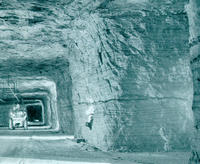
Beds of salt up to one kilometer thick lie within one or two kilometers of the surface across much of the United States; they were deposited hundreds of millions of years ago by evaporating seas; a new study suggests that since President Obama killed the only national nuclear waste burial program — the Yucca mountain site — the United States should look again at the pre-Yucca plan to bury nuclear waste in subterranean salt beds
-
-
Algae might help reduce nuclear waste
The humble algae — Closterium moniliferum — might one day soon be used to help separate strontium from calcium in nuclear waste; if successful, the process could lead to a reduction in the amount of nuclear waste that is left over from nuclear power facilities, and might even help in cleanup when accidents occur such as the one in Chernobyl, Ukraine, that spewed great quantities of strontium into the surrounding environment
-
-
U.S. reactors have weaker back-up batteries than Fukushima Daiichi had
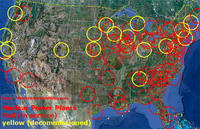
Almost all American nuclear power plants have backup batteries that would last only half as long as those at Japan’s troubled Fukushima Daiichi plant did after a tsunami knocked out power there; just eleven of the U.S. 104 plants had eight-hour batteries, and 93 had four-hour batteries; the batteries are not powerful enough to run pumps that direct cooling water, but they can operate valves and can power instruments that give readings of water levels, flow and temperatures
-
-
Fukushima Daiichi nuclear plant lost
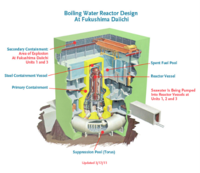
The radioactive core in the Unit 2 reactor at the Fukushima Daiichi nuclear plant appears to have melted through the bottom of its containment vessel and is now resting on a concrete floor; officials are now struggling with two crucial but contradictory efforts: pumping in water to keep the fuel rods cool and pumping out contaminated water; an investigation found that Tokyo Electric Power Co. officials had dismissed scientific evidence and geological history that indicated that a massive earthquake — and subsequent tsunami — was far more likely than they believed; more than 11,000 bodies have been recovered, but officials say the final death toll is expected to exceed 18,000. Hundreds of thousands of people remain homeless, their homes and livelihoods destroyed. Damage could amount to $310 billion — the most expensive natural disaster on record
-
-
Nuclear power here to stay
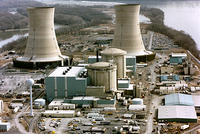
There are currently 441 large nuclear power reactors in 35 countries, 120 of which date from the 1970s and early 1980s; collectively the 400-odd reactors supply about 15 percent of the world’s electricity (the average in OECD countries being more than 22 percent); the United States has the greatest number operating, with 104 units providing 20 percent of its electricity supply; this is followed by France with 57 (producing nearly 80 percent of its supply), and Japan, with 54 (providing about 30 percent); so far, the world’s 441 reactors have racked up more than 14,000 reactor-years of operation; to generate electricity for a city of a million people, coal-fired power stations have to burn about three million tons of coals a year, releasing about ten million tons of carbon dioxide to the atmosphere in the process; to generate the same power, nuclear reactors consume only one ton of the fissile uranium isotope, U-235 — and release no carbon dioxide
-
-
Japan's disaster draws attention to little-known U.S. nuclear insurance plan
A little-known insurance pool in the United States that would provide insurance coverage for victims of nuclear reactor accidents occurring in the United States; the pool has been around for decades; Created under the Price-Anderson Nuclear Industries Indemnity Act of 1957 (Price-Anderson), the pool provides general liability insurance
-
-
Fifteen U.S. nuclear reactors are located in an active seismic zone
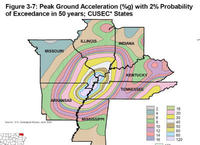
There are 104 nuclear plants in the United States, and fifteen of them are located in what is known as the New Madrid Seismic Zone, a region defined by a fault line of the same name; the New Madrid Seismic Zone involves eight states, and it is an active earthquake area in the central United States that follows the Mississippi River between Missouri, Kentucky, Arkansas, and Tennessee; while the U.S. earthquake zone is active, scientists say the ingredients do not exist there for a Japan-style nuclear disaster; should a large seismic event strike this part of the country, seismologists offer Christchurch, New Zealand, rather than Japan as an example of what to expect. In February, Christchurch suffered a 6.3 magnitude quake and billions of dollars in losses
-
-
Germany's drive to end nuclear power serves as model for others

Germany’s ambitious plan to wean itself from nuclear power and transition to renewable energy can serve as a valuable model for other countries seeking to do the same; nuclear power provides Germany with 23 percent of its energy; seven of its seventeen nuclear reactors will be taken offline; experts warn that the shutdowns could cause instability in the power grid and even blackouts; economists also say that the transition will be costly and result in higher energy prices for consumers; the government remains optimistic; renewable energy provides 17 percent of Germany’s energy needs and the Environment Ministry says that in ten years renewable energy will constitute 40 percent of all production
-
-
Zion's nuclear dry-cask storage solution
In Illinois, 28,588 fuel assemblies, each containing a bundle of 200 rods and weighing about 600 pounds, are cooling in pools on the ground or above reactors — as in Japan; experts say they are “very inviting targets for terrorists”; moreover, “No one has come up with a solution to safely store this waste for 10,000 years into the future”
-
-
NRC: Not all equipment failures at U.S. nuclear plants are reported
Companies that operate U.S. nuclear power plants are not reporting some equipment defects that could create safety risks, according to a new report; the Nuclear Regulatory Commission’s (NRC) inspectors found at least twenty-four instances where possible equipment defects were identified but not reported to the agency from December 2009 through September 2010; the NRC inspector general also raised questions in the report about the agency’s oversight, saying reporting guidelines for the nuclear industry are “contradictory and unclear”; unless the NRC takes steps to improve its reporting guidelines, “the margin of safety for operating reactors could be reduced” the report said
-
-
Nuclear countries glean lessons from Japan's disaster

Japan’s effort to contain the escalating nuclear disaster reveals a series of missteps, bad luck, and desperate improvisation; what also emerges is a country that has begun to question some of its oldest values: Japanese have long revered the country’s bureaucratic competence, especially when it is contrasted with its political dysfunction; Japan has also proudly often chosen to go its own way and turn down outside assistance; other countries relying on nuclear power generation are trying to see whether the Japanese disaster holds lessons for them
-
-
Indian Point 50-mile evacuation plan unrealistic
Located only thirty-five miles north of New York City, the most populous area in the United States, is the Indian Point nuclear reactor; safety officials are questioning the wisdom of operating a plant so close to New York City; a fifty mile evacuation radius around the plant would affect nearly twenty million people and some say evacuating that many people on short notice is a “fantasy”; NRC is currently conducting a thorough safety review of U.S. nuclear plants and the Indian Point reactor is one of seventeen under scrutiny; New York Governor Andrew Cuomo recently called for the plant to be shut down
-
-
U.S. reconsiders nuclear plant sites amid safety review
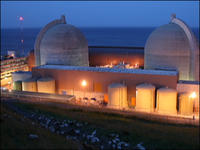
Following the nuclear crisis that occurred in Japan as a result of a massive earthquake and tsunami, the United States is undergoing a thorough safety review of existing plants that may affect where new plants are located; President Obama ordered the Nuclear Regulatory Commission (NRC) to conduct a comprehensive safety review of all nuclear plants in the United States; observers are particularly concerned with the Indian Point nuclear power station located forty miles north of New York City; if an accident were to occur, up to twenty million people, including eight million in New York City, would have to be evacuated
-
-
New reactor design lessens risks
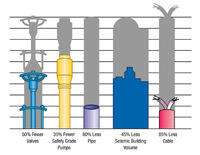
One of the major vulnerabilities of the four Japanese reactors which failed as a result of the combined force of the earthquake and tsunami, was that they relied on active cooling systems that require electricity; if there is a power outage, and if diesel back-up generators stop working, water stops flowing into the reactor pool to keep the uranium rods cool; newer reactor design relies on a passive cooling system: water is suspended over the reactor housing, and if pressure within the system drops, this allows the water to fall into the reactor area, submerging it in enough water to keep it cool
-
More headlines
The long view
Virtual Models Paving the Way for Advanced Nuclear Reactors
Computer models predict how reactors will behave, helping operators make decisions in real time. The digital twin technology using graph-neural networks may boost nuclear reactor efficiency and reliability.
